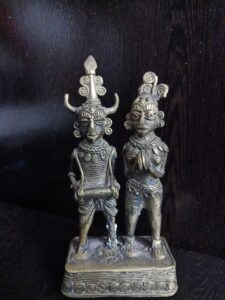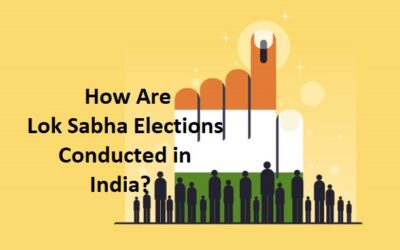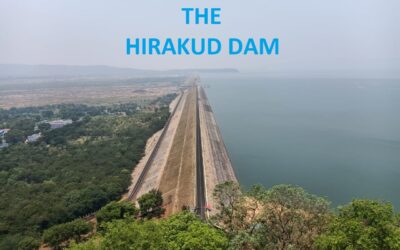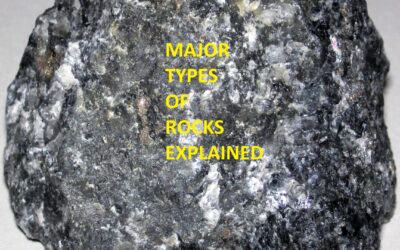Why Are Teachers So Obsessed With Class VII Social Science Lesson Plan
A good class VII Social Science Lesson Plan connect the teacher with their students. Social sciences teach the students how to interact with the social world. Not only that it also help in influencing policy, developing networks, increasing government’s accountability and promoting democracy. Social studies connect students with the real world. But, to connect the students with real world, Social Science teachers require an effective and interactive lesson plan. Therefore, teachers are so obsessed with Class VII Social Science Lesson Plan. In today’s world, students must be prepared to interact with people of all cultures and communities. A good 13 point interactive class VII Social Science (Civics) lesson plan can prepare them for this.
Class VII Social Science Lesson Plan With Classroom Activities
Class VII Social Science Lesson Plan For The Month Of October:
Topics covered:
History:
- Towns, Traders and Craftsmen
Political Science
- Gender Inequality
______________________________________________________________________________________________________________________________________________________________________________
Class VII Social Science (History) Lesson Plan – For The Month Of October

Dhokra Art by Indian tribal Craftsmen Class VII Social Science (History) Lesson Plan
Chapter 6 – Towns, Traders and Craftsmen
General Objective:
- To develop keen observation, imagination and interest in the subject.
- To apply the knowledge practically in real life.
- Developing scientific temperament and critical thinking among the students.
Specific Objective:
- Students will learn about the different types of towns.
- They will also know about how towns developed in the past.
- Students will also learn about the various craftsmen and traders.
- trace the origins and histories of towns.
Checking Previous Knowledge:
The teacher checks the previous knowledge of the students by asking them a question.
Why is Tirupati, Mysore, Ajmer, Madurai, Banaras, Jagannath Puri , Madhubani and Jamshedpur famous.
Introducing Topic:
The teacher introduces the topic by asking basic questions like:
Teacher: What will happen if a village has a good school?
Student’s response: Children of that village will get education.
Teacher: what if there is also a college?
Student’s answer: Children from nearby villages will also come to study in that village.
Teacher: And there is a good hospital also, then
Student’s answer: Forests, People from other villages and near by towns will come for the treatment.
Teacher: if the village is well connected by good road and rail ?
Student: Many people can come to that village.
Teacher: Will it remain a village or will become a small town.
Students are unable to answer this question.
Statement of Topic
Now, the teacher will announce the topic.
Today we are going to study about ” How small villages turn into bigger and famous towns”.
Teaching Method: Story Telling
Once upon a time there was a small village.
People of the village were very simple and engaged in farming.
One fine day a businessman decided to set up a small industry in that village.
He started appointing more people to work in that industry.
As the industry grew, many cars, trucks and buses started moving in that village.
New and good roads were constructed.
Quarters for the employees, school, Hospital and college for employee’s children also started.
People’s income also increased.
Many small and big shops and hotels Started coming up.
The population of the village increased.
With all facilities, this small village turned into a big town.
Now this town was known for that industry.
Such a town is known as an Industrial town.
Jamshedpur, Bokaro, Durgapur, Bhilai and Rourkela are such examples today.
Moral of the story:
“One initiative/thought can bring a big change”
After narrating this story, the students will have interest to know more about other types of town.
Taking the advantage, the teacher starts explaining the chapter.
Teaching aids: Text Book, Black Board, Images and PPT
Technique: Interactive with common examples.
The teacher uses various methods to make the topic interesting by interacting with the children in the class.
By asking very simple questions, the teacher draws the attention of the class.
Also make sure that the children are involved in the discussion.
While interacting with the students, the teacher also tells about different types of towns
The teacher also discusses about craftsmen and traders.
Content/ Teaching Points:
- Introduction
- Administrative Centers
- Temple Towns
- A Network of Small Towns
- Traders Big and Small
- Crafts in Towns
- New Towns and Traders
Activity: Open Book Assessment
Q1. Which of the following was also an example of a temple town (The capital of Cholas)?
Q2. Where was the Rajarajeshvara temple constructed?
Q3. Which of the following was a pilgrim center – Bombay, Calcutta, Surat, Pushkar.
Q4. What was Mandapika – Mandap, Mandi, Mandal
Q5. Why did people from distant land visited Surat?
Q6. Give an example of a temple town in
i) Madhya Pradesh ____________ ii) Gujarat ________________
iii) Andhra Pradesh ___________ iv) Tamil Nadu ______________
Q7. Which technique was used in making Chola bronze statues?
Q8. What is an alloy? Bronze is an alloy of _________ and ________________?
Q9. Which city was the capital of the Chauhan kings?
Q10. Name the sufi saint who settled in this city and attracted devotees from all creeds?
Class work:
i) short answer type questions will be done.
ii) Long answer type questions will be discussed and done in the class.
Home-work: Map activity:
In an outline Political map of India, mark the following as instructed.
i) Any two temple towns with Red color
ii) Two Administrative towns with Blue color.
iii) Any two port towns with blue color.
Values imparted:
Skill development
Sensitization towards craftsmen
Maintaining healthy relations with vibrant communities.
Multidisciplinary Integrated learning:
- Hindi: Write the names of 10 cities and for which they are famous for.
- Art: Use clay to make statues and color it.
- Science: Name four more alloys mentioning the metal combinations.
Assessment Criteria:
Indicators
- Relevance of Content
- Logical Approach
- Creativeness
- Analytical Skills
Learning Outcome:
After the completion of this chapter, students will be able to
- trace the origins and histories of towns.
- differentiate between founded towns and those that grow as a result of trade
- illustrate how travelers’ accounts, contemporary maps, and official documents are used to reconstruct history
Remedial Measure:
Each One – Teach One.
Children sitting on the left side of the row will explain the chapter to the children sitting on their right.
Class VII Social Science (Civics) Lesson Plan – For The Month Of October

Gender Inequality Class VII Social Science (History) Lesson Plan
Chapter 8. Gender Inequality
“You will often feel as if you don’t fit, but it has never been your destiny to fit in. You were born to stand out.” — Melena Rossouw
General Objective:
- To develop students interest in the subject.
- To apply the knowledge practically in real life.
- Developing scientific temperament among the students.
- To enhance student’s learning ability.
Specific Objective:
- Students will acquire knowledge about Gender inequality.
- They will also know how gender inequality hampers social development.
- Children will also acquire knowledge between Gender difference and gender-equality.
Checking Previous Knowledge:
The teacher checks the previous knowledge of the students by asking a question.
Who do you think to be superior? Men or Women.
Introducing Topic:
The teacher introduces the topic by asking basic questions like:
Teacher: Name some important religions in India?
Student’s response: Hindus, Muslims, Christians, Sikhs, Jains, Bodh, Parses etc.
Teacher: Are all the religions same or different.
Students: Different.
Teacher: All the religions good or bad.
Students: Good.
Teacher: It means things which look different can also be good.
So, do you think people with different height, health, looks, color, sex, Caste, religion can also be good?
Should we consider them as inferior?
Students: no answer (problematic question)
Statement of Topic
O.K. So, today we are going to discuss how people discriminate on the basis of gender.
Teaching aids: Text Book, Black Board, Images and PPT
Technique: Interactive with common examples.
The teacher interacts with students by asking simple questions.
Who cooks food in your house?
Who brings vegetables in your house?
In the absence of maid servant, who cleans the utensils?
Who works and earns for the family?
Is there any such work which can be performed only by women or only by men?
No.
Content/ Teaching Points:
Growing up as boys and girls.
case study 1: Growing up in Samoa in 1920s.
case study 2: Growing up in Madhya Pradesh in 1960s.
Valuing housework.
Lives of domestic workers.
Activity:
Make a list of work performed by your mother at home.
Make a list of work performed by your father at home.
Compare their work and find out whose work is important?
Write your conclusion.
Class work:
i) Objective and short answer type questions will be done.
ii) Long answer type questions will be discussed and done in the class.
Home-work:
Draw or paste the pictures of different types of work performed by men and women.
Values imparted:
Social responsibility.
Treating men and women equally.
Multidisciplinary Integrated learning:
- History: compare the role of women and men in early days with today.
- Art: Draw a scene were men and women are working together.
Other Activities:
Discuss and Debate
On one hand people talk about Gender equality and on the other hand they also talk about women empowerment. It is not discrimination?
Assessment Criteria:
Indicators
- Relevance of Content
- Logical Approach
- Creativeness
- Analytical Skills
Learning Outcome:
After the completion of this chapter, students will be able to
- explain gender equality.
- appreciate the role of men and women in society.
- learn about the changing mindset of people.
Remedial Measure:
Pair and share
Children sitting on the left side of the row will explain the chapter to the children sitting on their right.
Class VII Social Science Lesson Plan – For The Month Of October.
Conclusion:
I hope class VII Social Science Lesson Plan will be of great help to the teachers.
Apart from this, this year CBSE has also integrated one state with the other.
You can also include it in your Social Science Lesson Plan. To get the idea on this you may click on the following link
Integrating Chhattisgarh with Gujarat – Complete Guidance
For Class VII Social Science Term II Geography: Activity Based Lesson Plan,
Click here.
Was this lesson plan helpful to you? Write your views in the comment box.





Thank you for the lesson plans
These are very much helpful in planning the activities.
Thank you Zareena for your positive response. Keep visiting shapingminds.in
Excellent👍